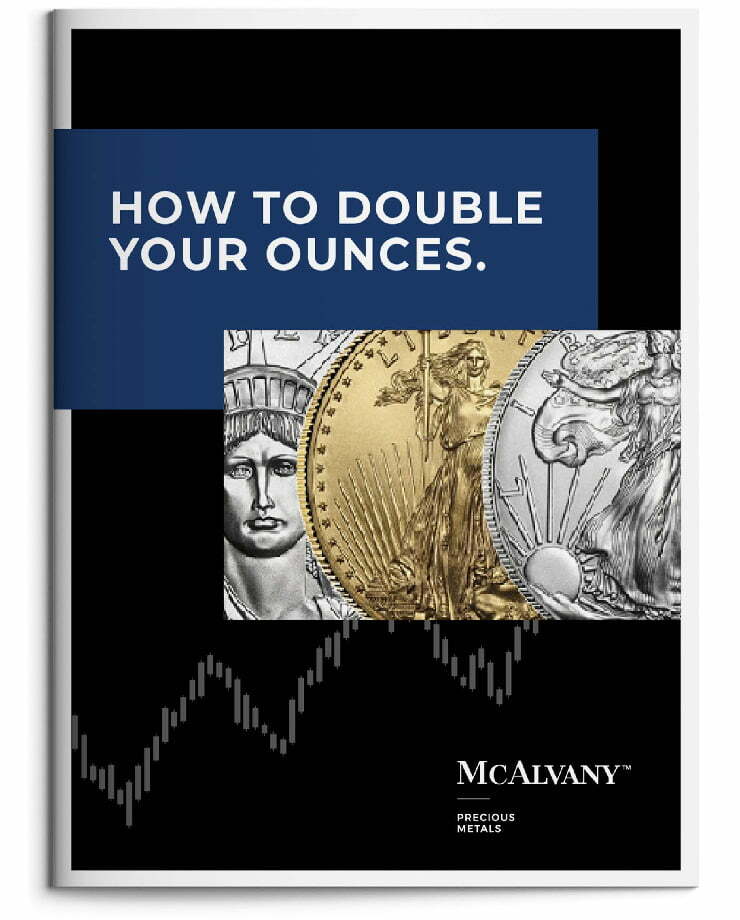Liberation Day and Liquidation Days
This was an exceptionally important week for markets, the economy, and for the post-1971 dollar-based global financial system. Without question, the highlight of the week (in fact, perhaps the highlight of recent decades in many ways) was President Trump’s Wednesday evening tariff announcement that had been billed by the administration as “Liberation Day.”
During the Rose Garden press conference, Trump announced that new U.S. reciprocal tariffs would amount to a 10% baseline tariff on all imports and significantly higher targeted duties (such as 54% tariffs on China exports, 24% on Japan, 20% on the European Union, 26% on India, and 32% on Taiwan) on dozens of countries. Ultimately, the new tariff policy amounts to the steepest U.S. trade barriers in over 100 years.
Soon after Trump’s tariff announcement, in a Wednesday evening interview on Fox News’ Special Report, Treasury Secretary Scott Bessent cautioned foreign nations against retaliations that could risk an all-out trade war. Bessent told Fox’s Bret Baier that, “My advice to every country right now is: Do not retaliate. Sit back, take it in, let’s see how it goes. Because if you retaliate, there will be escalation. If you don’t retaliate, this is the high-water mark.”
However, it seems, Bessent’s warning didn’t have the intended effect. Less than a day later, China announced a 34% retaliatory tariff of its own on U.S. imports.
In short, this week, the market’s greatest fears were realized. The Trump tariffs were far more aggressive than hoped, and China’s retaliation confirmed that an all-out global trade war is on.
The net effect of the drama of the week was that Trump’s “Liberation Day” sparked two historic “liquidation days” on Wall Street as fear over the implications of a full-scale global trade war suddenly seized markets. In fact, the Thursday and Friday combined sell-off ranks as the 16th worst two-day decline in S&P 500 history. The only instances of similarly comparable downside performance are all narrowly clustered within exceptionally difficult macro environments such as the Great Depression, World War II, the 1987 stock market crash, the 2008 Great Financial Crisis, and the 2020 Covid lockdowns.
Markets are suddenly unhinged. They seem hijacked by the radical uncertainty caused by an unfamiliar new set of rules. The selling pressure late-week was violent, broad-based, and relatively indiscriminate. For many institutions, it was a sell first, ask questions later situation. According to the Financial Times, highly levered hedge funds were hit with “the steepest margin calls since the 2020 Covid crisis.”
On Friday, Goldman Sachs’ Bobby Molavi summed up his rather ominous thoughts on the week in a note to clients. As Molavi put it, “time will tell, but it feels like an end of history moment and a move to a new era of economic warfare, de-globalization, and verticalization around regions and protectionism. It may also start that journey with a repricing of growth and a potential recession, or worse… In my personal view, they [the administration] pushed too hard and broke things.”
According to George Saravelos at Deutsche Bank, the dramatic late-week tariff-related sell-off is the signature of the market doing just one thing—“pricing in a global recession.”
Certainly, the pre-existing conditions conducive to a market sell-off are already in place. Consumer sentiment is recessionary, inflation expectations are high and rising, the Atlanta Fed’s real-time GDPNow tracker points toward a negative GDP print for Q1 2025, and this week’s ISM Manufacturing print was described by Bloomberg’s Odd Lots as “one of the ugliest, most stagflationary manufacturing reports in a long time.”
But there seems to be an even larger, even more profound realization hitting market participants this past week. In HAI’s view, that dawning realization is that this week’s official start of a possible all-out trade war likely marks the end of the decades-long trend towards globalization and the increased global trade liberalization it relied upon.
Secular macro regime change is upon the global system, and that change is likely to fundamentally restructure the global trade and capital flows that have defined the post-1971 dollar-based financial system as we know it. In short, in a financial system full of highly levered speculators gambling on the presumption that tomorrow will always look just like today and the yesterday that preceded it—profound uncertainty and doubt suddenly reign.
But amid the current market uncertainty and the indiscriminate selling pressure that uncertainty is producing, HAI would suggest that we’re not all flying blind here. Trump is counting on his new tariffs to help even the playing field on global trade, rebuild America’s manufacturing might (via greater relative competitiveness), and shrink America’s trade deficit. But importantly, as economist Robert Triffin pointed out in 1960, you can’t materially shrink the trade deficit of a reserve currency issuer without undermining the functioning of the existing global monetary system.
In other words, the Trump-accelerated macro regime change is also likely to greatly accelerate what Jeff Currie, former Global Head of Commodities Research at Goldman Sachs, has observed as the growing shift from international “dollar recycling” to “gold recycling.” The restructured system will dramatically increase the relative attractiveness of gold over U.S. Treasuries as the preferred global reserve asset.
The Trump-backed breakdown of the post-1971 global system as we know it appears to be officially underway as of this week. Caution in all assets is strongly advised in the near-term as market confusion and uncertainty reign. But in HAI’s view, as clarity emerges over the new set of rules, the writing is on the wall. Investor capital will adapt and flow heavily into gold and hard assets broadly. When that reallocation of capital flows starts in earnest, it’s likely to be a show not to be missed.
Weekly performance: The S&P 500 was down 9.08%. Gold was down 1.45%, silver was crushed by 13.02%, platinum was hit by 7.82%, and palladium was off by 7.30%. The HUI gold miners index was slammed by 9.32%. The IFRA iShares US Infrastructure ETF was down 6.68%. Energy commodities were volatile and lower on the week. WTI crude oil was off 10.63%, while natural gas was off 5.76%. The CRB Commodity Index was off 6.00%. Copper was crushed by 14.19%. The Dow Jones US Specialty Real Estate Investment Trust Index was off 4.10%. The Vanguard Utilities ETF was down 4.34%. The dollar index was down 1.02% to close the week at 102.99. The yield on the 10-yr U.S. Treasury was down 24 bps to close at 4.00%.
Have a wonderful weekend!
Best Regards,
Morgan Lewis
Investment Strategist & Co-Portfolio Manager
MWM LLC















